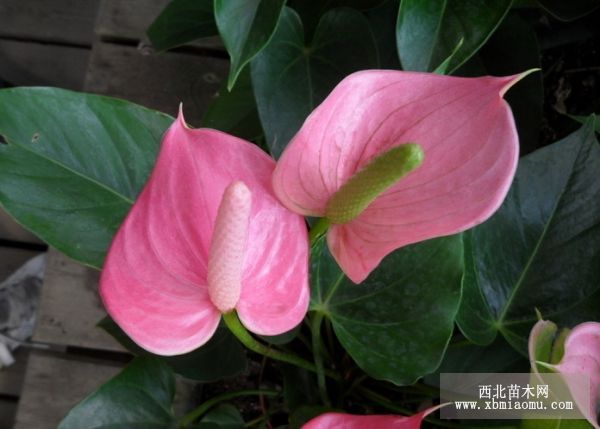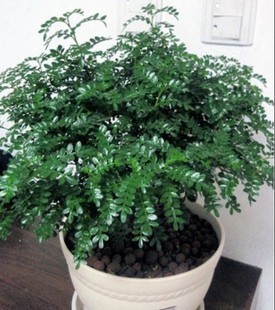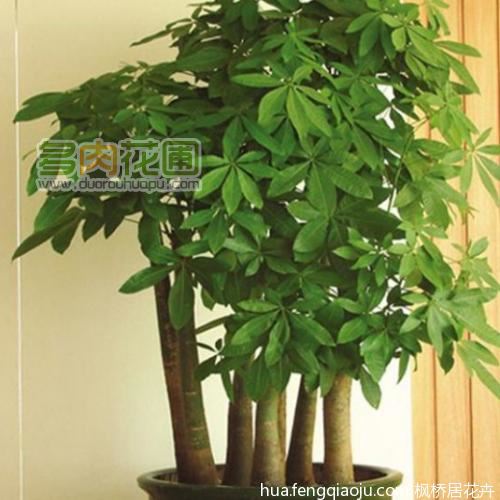How does Anthurium andraeanum promote sprouting?
Anthurium andraeanum grows vigorously and blossoms normally, but it does not sprout at the base, so it is impossible for ramet propagation. How can we promote its base to sprout?
First, before germination in spring, a smaller flowerpot was used to restrict the vegetative growth of the plant and promote it to sprout in the root neck so as to facilitate ramet propagation.
Second, the apical bud, which is the growing point of the plant, can be stabbed with a thicker animal needle or cut off the terminal bud with a sharp knife after the Buddha's flame has withered. These two measures can effectively promote the sprouting of tillering buds at its base. Pay attention to the artificial stab wound or cut off the growth point of the wound, do not be contaminated with sewage, so as not to cause wound decay, leading to the failure of tillering bud sprouting or partial plant necrosis.
When 2-3 leaves are produced from the young buds, the mother plant is removed from the flowerpot by changing pots, the ion plants are cut with a knife, and the plants are planted in another pot. For some species with more stem nodes, because each node can produce angry roots, the number of 3-4 leaves can be used as a cutting unit. in order to promote the sprouting of lateral buds in the axils of the lower leaves, the depth of 0.5 cm can be cut in advance a few days before the stem nodes are cut. Promote the leaf axil above the cut. New buds are sprouted as early as possible, and cutting propagation can be carried out for species with strong erect nature.
How to promote germination of Anthurium andraeanum
Anthurium andraeanum, formerly known as red taro (scientific name: Anthurium andraeanum), Araceae, Candle is a perennial evergreen herb. For the famous cut flowers. Native to the tropical rainforest of southwestern Colombia in South America. High 40~50cm. Stemless. Leaves bright green, long oval heart-shaped, long stalk quadrangular. Flower stem high above leaf surface; flame bract broad heart-shaped, surface undulate, with various colors; fleshy inflorescences yellow, erect. Blossom all year round. There are many varieties, such as' dense leaf candle', 'white candle' and 'red candle' and so on. The growth temperature was 2030 ℃, and the growth stopped at 10 ℃. It is not resistant to drying and requires 80% relative humidity. Medium-sized potted flowers; water-raised for up to half a month, is a high-grade cut flower.
The world scientific research of Anthurium andraeanum has been in a more in-depth stage, in which the level of Europe is higher, Asia is the second, and Africa is the worst. The Netherlands takes the lead in the systematic research of Anthurium andraeanum. Introduction and cultivation began in China in the 1970s.

How to promote the germination of Anthurium andraeanum one is to use a smaller flowerpot before germination in spring to restrict the vegetative growth of the plant and promote it to sprout in the root neck in order to facilitate ramet culture. Second, the apical bud, which is the growing point of the plant, can be stabbed with a thicker animal needle or cut off the terminal bud with a sharp knife after its flame has withered. These two measures can effectively promote the sprouting of tillering buds at its base. Pay attention to the artificial stab wound or cut off the growth point of the wound, do not be contaminated with sewage, so as not to cause wound decay, leading to the failure of tillering bud sprouting or partial plant necrosis. When 2 to 3 leaves grow out of the buds, the mother plant will be removed from the flowerpot combined with changing pots, and the ion plants will be cut with a knife and planted in another pot. For some species with more stem nodes, because air roots can occur in each node, the number of 3 to 4 leaves can be used as a cutting unit. in order to promote the sprouting of lateral buds in the axils of the lower leaves, the depth of 0.5 cm can be cut a few days before the stem nodes are cut. New buds can sprout in the axils of leaves above the cut part as early as possible, and cutting culture can be carried out for species with strong erect nature. Diagram of how to split Anthurium andraeanum
How to split Anthurium andraeanum 1. Let the mother plant out of the basin
First of all, we must pour a small amount of water into the flowerpot, mainly to detach the soil close to the wall of the flowerpot from the original flowerpot, and then take the mother plant of Anthurium andraeanum together with the soil, remember to take it out of the original pot by upside down.
You need to hold the upside-down plant and basin soil with one hand, and with the other hand, insert your finger into the drain at the bottom of the basin and pull up so that the plant can be easily removed without damaging the plant.
2. Remove the old soil from the roots
After the Anthurium andraeanum is removed, put the Anthurium andraeanum plant together with the potted soil on the ground, and then gently remove the soaked soil around the plant. Be careful during the operation to avoid damaging the roots of Anthurium andraeanum. Of course, tools can be used to help clean up the soil.
3. Ramet mode
After pulling out most of the adherent soil from the parent plant of Anthurium andraeanum, the root system basically leaks out, remember to straighten out the root system, and divide the Anthurium andraeanum into several plantlets, and be careful to avoid plant injury in the process of ramet.
4. Potted transplanting of Anthurium andraeanum
Remember to choose the young plants with strong growth for transplanting, and the survival rate is high. After selecting the seedlings of Anthurium andraeanum, you can transplant according to the normal pot method.
- Prev

Culture methods and matters needing attention of Luohansong
Luohansong is an evergreen tree. Leaves spirally alternate, strip-lanceolate, apex pointed, base narrow into petiole shape, rib raised on both surfaces, surface dark green, abaxially yellowish green, flowers bisexual, male cones spikelike, often 3-to 5-fascicled in leaf axils; female flowers usually solitary in leaf axils, pedicellate. Flowering in May
- Next

What are the matters needing attention in the cultivation and maintenance of rich trees?
The rich tree, also known as Malaba chestnut, melon chestnut, etc., is an evergreen tree of the kapok family. At first, it was introduced to Taiwan as a fruit tree, but the flowers did not blossom when they were planted intentionally. Inadvertently insert willow but become overcast, as a fruit tree has not been promoted, potted ornamental is very popular, and quickly exported to Japan, South Korea
Related
- Fuxing push coffee new agricultural production and marketing class: lack of small-scale processing plants
- Jujube rice field leisure farm deep ploughing Yilan for five years to create a space for organic food and play
- Nongyu Farm-A trial of organic papaya for brave women with advanced technology
- Four points for attention in the prevention and control of diseases and insect pests of edible fungi
- How to add nutrient solution to Edible Fungi
- Is there any good way to control edible fungus mites?
- Open Inoculation Technology of Edible Fungi
- Is there any clever way to use fertilizer for edible fungus in winter?
- What agents are used to kill the pathogens of edible fungi in the mushroom shed?
- Rapid drying of Edible Fungi

